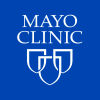预约演示
更新于:2025-05-07
NTS
更新于:2025-05-07
基本信息
别名 Large neuromedin N、neuromedin N、neurotensin + [9] |
简介 Neurotensin may play an endocrine or paracrine role in the regulation of fat metabolism. It causes contraction of smooth muscle. |
关联
5
项与 NTS 相关的药物靶点 |
作用机制 NTS拮抗剂 |
在研机构 |
原研机构 |
在研适应症 |
非在研适应症- |
最高研发阶段临床前 |
首次获批国家/地区- |
首次获批日期1800-01-20 |
靶点 |
作用机制 NTS modulators |
在研机构- |
原研机构 |
在研适应症- |
非在研适应症 |
最高研发阶段无进展 |
首次获批国家/地区- |
首次获批日期1800-01-20 |
靶点 |
作用机制 NTS modulators |
在研机构- |
在研适应症- |
非在研适应症 |
最高研发阶段无进展 |
首次获批国家/地区- |
首次获批日期1800-01-20 |
100 项与 NTS 相关的临床结果
登录后查看更多信息
100 项与 NTS 相关的转化医学
登录后查看更多信息
0 项与 NTS 相关的专利(医药)
登录后查看更多信息
6,123
项与 NTS 相关的文献(医药)2025-06-01·Burns
Nile tilapia skin in burn wound healing: A scoping review
Review
作者: Sanjaya, Ardo ; Bustaman, Andrew Laurie ; Soekmadji, Peter Nugraha
2025-06-01·Neuropeptides
BDNF-mediated depressor response by direct baroreceptor activation benefits for prevention and control of hypertension in high-latitude cold region
Article
作者: Feng, Yan ; Yin, Lei ; Li, Ying
2025-06-01·Water Research
Identifying and prioritizing organic toxicants in treated flowback and produced water from shale gas exploitation sites using an integrative effect-directed analysis and nontarget screening method
Article
作者: Zeng, Xiangying ; Zhang, Keshuo ; Kuang, Jiangmeng ; Li, Huizhen ; Zhang, Ling ; Yu, Zhiqiang ; He, Liwei ; Wu, Fan ; Zhou, Zhimin ; Cheng, Fei ; Du, Yingqi ; You, Jing
12
项与 NTS 相关的新闻(医药)2024-07-17
·精准药物
今日,辐联科技宣布,其与SK
Biopharmaceuticals(简称“SK公司”)签署了一项对外授权许可协议。辐联科技授予SK公司在全球范围内进行临床研究、开发、生产和商业化放射性药物FL-091的独家权利。
根据协议条款,SK公司将授权引进FL-091及其备选化合物,并将其开发成一款创新型抗肿瘤药物;该项交易总额为5.715亿美元,包含首付款、研发及商业里程碑付款,另有特许权使用费未计算在内。
关于FL-091
FL-091(177Lu-FL-091)是一款靶向神经降压素受体1型(NTSR1)的放射性药物偶联物(RDC),具有强效的NTSR1结合亲和力。FL-091在体内表现出有利的治疗性生物分布特性,并在多个肿瘤异种移植小鼠模型中显示出优异的体内疗效。
具体临床前数据根据2024年SNMMI年会披露:
与3BP-227相比,FL-091对NTST1的结合亲和力和拮抗剂活性增强。
与177Lu-3BP-227相比,177Lu-FL-091表现出更好的体内生物分布特征,增加了肿瘤摄取和更快的正常组织清除。
在不同异种移植模型中,177Lu-FL-091均表现出良好的体内疗效;在相同剂量水平下,177Lu-FL-091相较于177Lu-3BP-227具有更好的抗肿瘤活性。
NTSR1在多种类型的癌症中高度表达,尤其是在头颈部和结直肠癌中。
关于靶向NTSR1药物
神经紧张素(NTS)是中枢神经系统的一种神经递质和神经调节物,同时还是外周组织(主要是胃肠道)的一种局部激素。在脑部,NTS通过黑质纹状体和中脑边缘这两条途径调节多巴胺能的传递,同时还能调节垂体前叶分泌各种激素。在外周组织,NTS主要通过内分泌样N细胞释放到小肠。NTS具有双重功能,它可以作为内分泌和旁分泌的调节因子帮助消化,同时也可以作为生长因子促进多种正常组织和癌组织的细胞生长。
NTS的各项生理功能主要由通过与其相互结合的特异性受体(NTSR)调节。目前已知的受体有NTSR1、NTSR2、NTSR3;其中NTSR1和NTSR2均为NTS的特异性受体。NTSR3是一种不同于前两者的神经肽受体,并且不是NTS的特异性受体,能和多种配体结合。NTSR1主要分布于大脑和肠道,其中在大脑部分的NTSR1分布在斜角带布神经元、内侧隔核、前脑基底核、视交叉上烤、乳头状核区域、脑黑质以及腹侧被盖区,多位于神经元细胞膜以及神经末稍上,现已证实在多种肿瘤组织中都有表达,包括肺癌,胰腺癌,前列腺癌,结肠癌,头颈癌以及乳腺癌。
据不完全统计,目前在研的NTSR1药物约13种。
关于放射性药物偶联物
RDC是一种将精准靶向分子 (单抗或多肽/小分子,Ligand) 和强力杀伤因子 (核素,Radioisotope) 用连接臂 (Linker) 螯合剂(Chelator)偶联在一起而设计开发的药物形态;得益于其特殊的作用机制,RDC可实现高精度诊断及在治疗疾病的过程中具有不易耐药等优点,被认为是目前核药靶向治疗领域最具潜力的发展方向之一。
RDC的结构类似于ADC 药物,据简一生物官方公众号,RDC 机制为利用抗体或小分子介导特异性靶向作用,将细胞毒性分子或成像分子如放射性核素递送至靶位置,从而将放射性同位素产生的放射线集中作用于组织局部,在高效精准治疗的同时降低全身暴露对其他组织造成的损伤。核素带来的放射性射线所产生的能量可破坏细胞的染色体,使细胞停止生长,从而消灭快速分裂和生长的癌细胞。
ADC与RDC对比
根据靶向配体的不同,可细分为抗体偶联核素药物(ARC)、小分子偶联核素药物和多肽偶联核素药物(PRC),其中多肽偶联核素药物是目前的热门研发方向。
三类RDC药物类型
RDC 具备诊疗一体的优势,实现疾病诊断和治疗双赢。在诊断层面,通过连接诊断核素进入人体,利用分子影像方式监测诊断试剂及其靶点结合的位置,这也就意味着看见其靶向需要治疗的肿瘤位置;在治疗层面,同一药物结构加载治疗核素后,相应治疗核药仍然会结合到上述诊断试剂结合的肿瘤靶点上,从而产生治疗效果。具体优势包括:
机制方面:核药依靠直接的核素内照射,可降低肿瘤细胞的放射抵抗的耐药机会。
靶向配体:除了大分子的单抗以外,还可以是体积更小的小分子或多肽等,更容易让RDC 通过渗透作用深入肿瘤内部,更不容易产生耐药。
据不完全统计,截至目前全球在研RDC药物近上千款,其中共26款获批;其中,Novartis 是该领域的领跑者,拥有多款RDC药物。POINT Biopharma、Telix、ITM、拜耳等也在积极布局RDC赛道,多款肿瘤治疗产品处于临床阶段。
全球已获批的RDC药物
2023年,Lutathera和Pluvicto的总销售额突破15亿美元(折合人民币114亿元)。Lutathera 上市当年销售额即突破1.6 亿美元,但由于Lutathera 获批的适应症为胃肠胰腺神经内分泌肿瘤,属于罕见肿瘤,市场需求有限,上市后第二年达峰后,基本稳定在约4 亿美元的销售额,2023年销售额增长至6.05亿美元。Pluvicto在2022年被FDA 获批用于治疗前列腺特异性膜抗原(PSMA)阳性、转移性去势抵抗性前列腺癌(mCRPC)患者,有望接力Lutathera 打开更大市场空间,2023年销售总额达9.8亿美元,同比增长261%。
关于辐联科技
辐联科技成立于2021 年8 月,是一家全面整合的国际化放射性治疗公司,在比利时、德国和中国均设有办事处。该公司致力于打造拥有放射性药物研发、生产和商业化的全产业链的核药公司以造福全球患者。
公司专有的研发平台UniRDCTM ,旨在提高RDC候选药物的发现效率。该平台涵盖小分子、环肽和纳米抗体等一系列模式;它以一套丰富的专有合成化学和蛋白质工程工具包为核心,其中包括 Clear-XTM 连接子和 Res-XTM 修饰方法。在将亲和力成熟的结合体快速转化为治疗上具有最佳生物分布特性的开发候选物的过程中,这些工具包已被证明能起到关键作用。
公司正尝试发挥RDC 特有的诊疗一体化优势,使用同样的配体偶联不同放射性元素来开发多款产品,以构筑肿瘤诊断-治疗-疗效评估闭环。目前,公司拥有基于平台开发的14 款在研管线。
对外合作上,2022年11 月公司宣布收购Focus-X Therapeutics,强化了以多肽为配体的核药研发管线。
参考资料
1、公司官网
2、动脉新医药、汇佳生物、医药宇宙、小核说核药、医药笔记、药智网、简一生物、bioSeedin柏思荟、药智网、找药宝典
3、德邦证券、申万宏源、华泰证券、平安证券、国元国际、中信证券、蛋壳研究院
声明:发表/转载本文仅仅是出于传播信息的需要,并不意味着代表本公众号观点或证实其内容的真实性。据此内容作出的任何判断,后果自负。若有侵权,告知必删!
长按关注本公众号
粉丝群/投稿/授权/广告等
请联系公众号助手
觉得本文好看,请点这里↓
放射疗法
2024-02-15
·生物探索
引言神经细胞对各种外部信号的适当和特异性反应对于神经回路的建立和维持至关重要,这一过程需要适当募集适应分子来选择性地激活下游通路。2024年2月14日,中国医学科学院/北京协和医学院彭小忠及舒鹏程共同通讯在Signal Transduction and Targeted Therapy(IF 39)在线发表题为“Docking protein 6 (DOK6) selectively docks the neurotrophic signaling transduction to restrain peripheral neuropathy”的研究论文,该研究发现Dok(酪氨酸激酶的下游)家族的成员DOK6是维持外周轴突所必需的,并且DOK6的缺失会导致小鼠典型的外周神经病变症状,表现为感觉受损、异常姿势、足部畸形、神经传导受阻和髓鞘发育障碍。此外,Dok6在周围神经元中高表达,而在雪旺细胞中不表达,并且周围神经元中Dok6的基因缺失导致典型的外周髓鞘外折叠、轴突破坏和轴突逆行运输受阻。具体来说,DOK6是TrkC和Ret选择性介导的神经营养信号转导和逆行转运的衔接蛋白,而不是TrkA和TrkB的衔接蛋白。DOK6与运输机制中的某些蛋白质相互作用并控制其磷酸化,包括MAP1B、Tau和Dynein,用于轴突运输,并特异性激活下游ERK1/2激酶途径以维持轴突存活和稳态。这一发现为遗传性周围神经病变和其他退行性疾病的发病机制和治疗提供了新的线索。神经活动的几乎所有方面,从神经元和胶质细胞的产生到适当电路的建立和维持,都依赖于细胞内对环境信号(如神经递质、生长因子、激素和其他化学刺激)的精确信号转导。多种信号通路参与这些过程的调控,形成一个复杂而紧密组织的网络,以实现不同的功能结果。受体酪氨酸激酶(RTK)信号被广泛认为在周围神经系统(PNS)的发育和维持中起关键作用,影响周围神经元的轴突和雪旺细胞(SCs)产生的髓鞘。受体酪氨酸激酶(RTK)信号在细胞内区域含有一个催化酪氨酸激酶。RTKs信号转导失调导致多种神经病变。RTKs是细胞表面受体的一个大家族,通常由生长因子和营养因子激活。激活后,RTKs招募适配器和效应蛋白来促进各种下游细胞内信号级联,包括丝裂原活化蛋白激酶(MAPK),磷脂酰肌醇3-激酶(PI3K), Janus激酶和信号转导和转录激活因子(JAK/STAT),以及PLCγ途径。MAPK级联被细分为至少四个亚家族:细胞外信号相关激酶(Erk1/2)、Erk5、JNK1-3和p38激酶(包括p38α、β、γ和δ)。令人感兴趣的是,多个RTKs利用相似的分子亚群或重叠的下游级联通路来实现不同的生物学结果,如细胞生长、分化、存活和功能。然而,如何实现信号特异性,或者如何产生独特的细胞反应,仍然是一个重大的挑战。模式图(Credit: Signal Transduction and Targeted Therapy)此外,一些RTK信号复合物也被运输,特别是神经营养因子信号。特异的靶源性神经营养因子(NTs)通过受体介导的内吞作用与受体结合形成信号内体,然后配体-受体复合物依靠动力蛋白和Rab蛋白通过基于微管的运动系统逆行运输,并募集下游分子激活特异的下游途径。值得注意的是,NGF和TrkA的突变,或逆行轴突运输通路组分(如DYNC1H1、RAB7A、KIF1A和DCTN1)的缺陷,可导致遗传性周围神经病变,这些病变具有广谱性,根据所涉及的神经元类型,具有可变的感觉、运动、自主神经和其他器官营养症状,并导致这些纤维的损伤。信号分子的转运控制着它们在转导事件中的精确空间位置,信号级联也影响转运。然而,这两种信号事件的调控机制尚不完全清楚。了解信号转导的组成部分对于揭示潜在的机制至关重要,因为它们的浓度、定位和与其他蛋白质的相互作用对于确定不同的和特定环境的反应至关重要。该研究发现DOK6是一个参与外周轴突维持的新因子,并发现DOK6的缺失会导致小鼠周围神经病变的典型症状。值得注意的是,Dok6在某些类型的DRG神经元中特异性表达,但在PNS的SCs中不表达,这是轴突髓鞘形成所必需的。从机制上讲,DOK6是促进NT-Trk信号逆行转运和选择性激活MEK/ERK信号通路的关键适配蛋白。这一发现也为驱动周围神经病变的潜在机制提供了新的见解。原文链接https://www-nature-com.libproxy1.nus.edu.sg/articles/s41392-024-01742-2责编|探索君排版|探索君文章来源|“iNature”End往期精选围观一文读透细胞死亡(Cell Death) | 24年Cell重磅综述(长文收藏版)热文Science最新发布:全世界最前沿的125个科学问题热文Nature | 2024年值得关注的七项技术热文Nature | 自身免疫性疾病能被治愈吗?科学家们终于看到了希望热文Nature | 癌症与神经系统的致命舞蹈
2023-08-13
·生物谷
李波教授表示,实验室目前正在探索操纵触发“享乐性饮食”神经元的方法,下一步将绘制出这些神经元如何对不同类型的食物做出反应,了解是什么让它们如此敏感,也希望这项研究会带来有效的肥胖治疗新策略。
据西湖大学官网报道,著名神经科学家、冷泉港实验室讲席教授李波于2023年8月全职加入西湖大学,任神经科学讲席教授。
李波实验室的研究分为以下几个方面:
1、情感和动机行为脑机制的研究。
3、大脑和外周代谢系统的相互作用,尤其是这些相互作用对代谢性疾病发生发展的影响,包括肥胖症和癌症恶病质。
研究聚焦于对相关功能神经环路、细胞、突触、基因和分子等层面的解析,运用多学科交叉的现代神经科学技术手段,包括离体或在体电生理记录和神经元功能成像、分子操纵、基因操纵、光遗传和化学遗传操纵、以及RNA测序等,来检测和调控大脑特定神经环路的功能,以阐明这些环路在适应性/非适应性行为及代谢反应中的作用。这些研究的发现将指导新型治疗手段的发展,来对抗和改善动机与情感性疾病、以及代谢性疾病。
本文将重点介绍李波团队近期的一项代表性研究工作——发现杏仁核中的表达神经降压素(Neurotensin)的前连合后肢间质核(IPAC),即IPAC-Nts神经元,控制了享乐性进食、能量稳态、和肥胖的发生。
在全世界范围内,肥胖已经成为了一个主要公共健康问题。据世界卫生组织(WHO)统计,全球有近20亿人超重或肥胖,从1975到2016年,全球肥胖率翻了近3倍,每年因超重或肥胖导致的死亡高达280万。
实际上,肥胖的人不仅生活不便、运动能力下降,还更易患代谢性疾病和心脑血管疾病。许多研究表明,肥胖与十多种癌症的发病风险增加和预后及生存率降低有关。
暴饮暴食、运动减少,是导致肥胖的重要因素,但除了一些罕见遗传因素外,我们尚不清楚暴饮暴食和运动减少还有哪些生物驱动因素。
杏仁核(Amygdala)是大脑基底神经核的一个重要核团,是大脑中负责识别情绪、产生情绪、调节情绪,以及控制学习和记忆的脑部组织,而一项最新研究显示,杏仁核在暴饮暴食中也可能发挥了重要作用。
2022年10月20日,李波教授团队在 Nature Neuroscience 期刊发表了题为:Neurotensin neurons in the extended amygdala control dietary choice and energy homeostasis 的研究论文。
李波教授团队在大脑杏仁核中发现了一组神经元会驱动小鼠进食,即使在它们不饿的情况下。当小鼠吃高脂肪和含糖的食物时,这些神经元会被激活,并引发一种所谓的“享乐性饮食”的行为,也就是为了快乐而不是为了生存而进食。这项新发现有望带来副作用最小的肥胖治疗新方法。
前连合后肢间质核(IPAC)是杏仁核中的一个核团,该研究发现,表达神经降压素(Neurotensin)的IPAC,即IPAC-Nts神经元,编码了对不健康食物的饮食偏好(例如高脂和高糖食物)。
论文通讯作者李波教授表示,在吃饱的情况下,动物应该停止进食,但如果IPAC-Nts神经元仍然活跃,就会驱使它们吃的更多。目前可用的能够帮助减轻体重的药物可能会产生明显的副作用,因此,需要开发一种更有针对性的方法。这项研究识别了控制饮食的大脑回路对于为那些难以控制体重的人开发更好的治疗方案非常重要。
研究团队使用光遗传学激活小鼠的IPAC-Nts神经元,能够促进已经饱腹的小鼠的饮食行为,而且它们更倾向于高脂、高糖食物。
而关闭IPAC-Nts神经元后,小鼠将不再被之前诱惑它们的高脂、高糖食物所吸引。它们只是开心的饮食,并保持健康,不仅停止了体重增加,而且总体上也似乎更加健康了。也就是说,关闭IPAC-Nts神经元,可以减少暴饮暴食、防止肥胖,还能促进身体运动,导致体重减轻,带来更好的新陈代谢健康。
李波教授表示,实验室目前正在探索操纵触发“享乐性饮食”神经元的方法,下一步将绘制出这些神经元如何对不同类型的食物做出反应,了解是什么让它们如此敏感,也希望这项研究会带来有效的肥胖治疗新策略。
李波博士1992年获济宁医学院学士学位(医学);1997年获中国科学院硕士学位(心理学);2003年获加拿大不列颠哥伦比亚大学博士学位(神经科学)。2003-2008年分别在美国冷泉港实验室和加州大学圣地亚哥分校从事博士后研究。2008-2023年历任美国冷泉港实验室助理教授、副教授、教授、Robert Lourie讲席教授。2023年8月全职到西湖大学工作,任神经科学讲席教授。
分析
对领域进行一次全面的分析。
登录
或

Eureka LS:
全新生物医药AI Agent 覆盖科研全链路,让突破性发现快人一步
立即开始免费试用!
智慧芽新药情报库是智慧芽专为生命科学人士构建的基于AI的创新药情报平台,助您全方位提升您的研发与决策效率。
立即开始数据试用!
智慧芽新药库数据也通过智慧芽数据服务平台,以API或者数据包形式对外开放,助您更加充分利用智慧芽新药情报信息。
生物序列数据库
生物药研发创新
免费使用
化学结构数据库
小分子化药研发创新
免费使用


